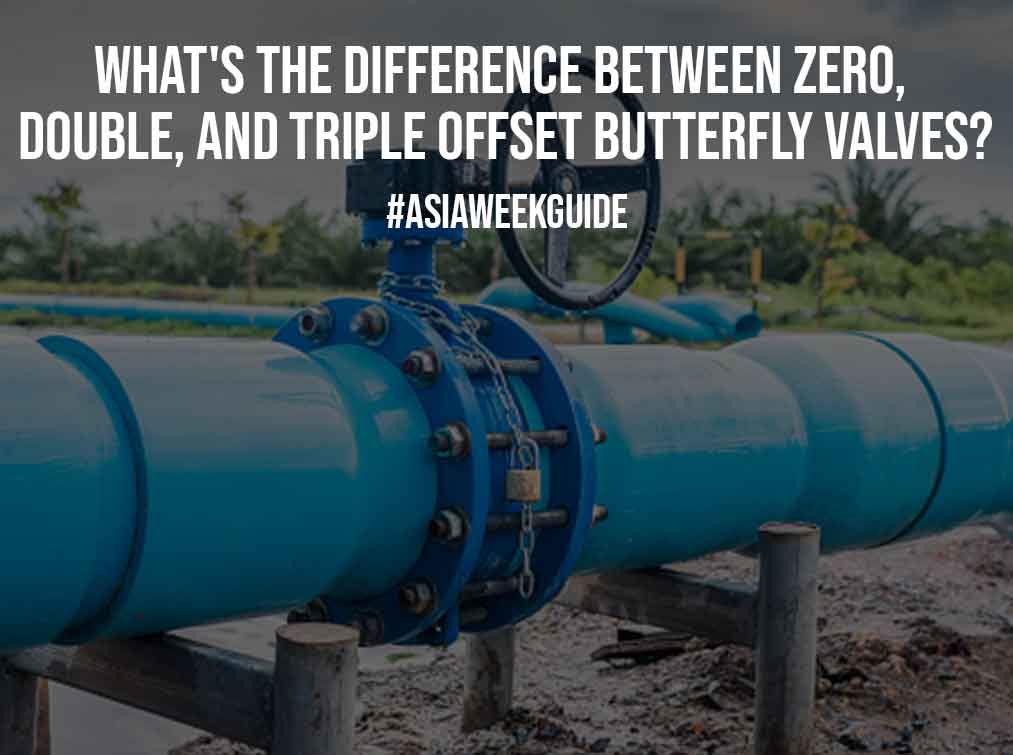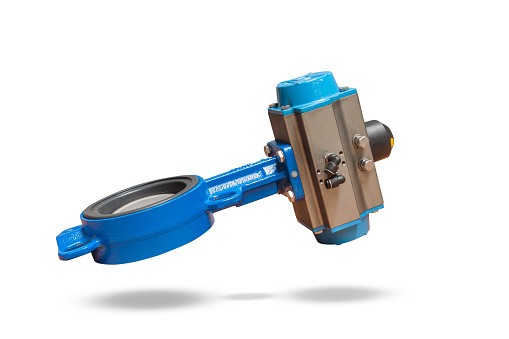Picking the wrong kind of valve might harm your business. Butterfly valves come in various shapes and sizes, including zero offsets, double offsets, and triple offsets.
In today’s times, metal-seated dynamic butterfly valves have found potential uses along with more standard industrial valves such as globe and ball valves.
While many people understand how a control valve works, they do not understand the differences between such eccentric valves and the uses that each is best suited for.

This article will talk about the differences between these three types of butterfly valves, which will help you choose the suitable industrial valve for your use.
Zero Offset
This form of industrial butterfly valve is often known as a concentric valve. It is a typical ‘resilient seated’ or ‘rubber seated’ butterfly valve that is used in regular service. The valve’s stem and disc are centered in the valve’s seat, which is centered in the valve’s body.. The seat is constantly in touch with the disc.

Because the seat is built as a ring or cartridge within the body, the medium passing through the valve will not touch the body.
Zero offset butterfly valves can be used in an atmosphere of up to 200 PSI and 400 degrees F. They find application in various basic and advanced liquid and gas operations. Chemicals, paints, food, certain solids, and gritty applications are all handled by the zero offset butterfly valve.
This valve comes in epoxy-covered cast iron and stainless steel, with various seat options, including EPDM, Buna, VITON, Natural rubber, Teflon, and many others.
Also Read: 6 Benefits of Buying Water Bubblers
Butterfly Valve with Double Offset
A high-performance butterfly valve is another name for this iconic valve. Two stems are offset from the center of this valve. During the app’s execution, this results in a cam move.
In the 1st offset, the shaft’s center is offset from the disc’s closing point axis.
The propeller axis is erratic to the center of the valve/pipe part in the second offset.
The double offset butterfly valve is commonly used in the following applications:
- Generating electricity
- Paper and pulp
- HVAC
- Chemical
- Natural gas and oil
- Treatment of water and wastewater
- Shipbuilding
Butterfly valves with a double offset are offered at higher pressures than those with a zero offset. The double offset is available in carbon steel, alloy steels, Metal alloys, and other body materials, Teflon seats, or a Fire Safe form with metal backup seats, up to an ANSI Class 600 grade.
Butterfly Valve with triple offset
There are three offsets with the triple offset butterfly valve. The second offset is the shape of the seating wall, which creates a cone shape of both the disc and seat, close to the double offset butterfly valve.
The second offset is the shape of the seating surface, which creates a type of circular pattern of the disc and seat. The disc closes against the seat with little friction due to the cone angle and the two divergent shaft offsets..
This seat shape also allows for consistent sealing and, hence, a tight shut in a metallic seat design. This design is less expensive and requires less effort (making it easier to automate) than other metal-seated valves.
Triple offsets are commonly applied in areas where a metallic seat is needed and tight shutoff and quarter round actuation are sought, akin to control valves.
Since a metal seat is required over a smooth center, high-pressure steam (above 150 PSI), superheated- steam, high heat gasses, lubricants, and high heat uses are ideal for this type of valve.
Triple offset butterfly valves are useful in situations involving abrasive materials, high intensity or temperature, or even waste gasses. People who operate the valves should wear protective equipment to ensure their safety. Fangyuan jackets bought from a reputed Fangyuan Jacket manufacturer, for example, are the best quality jackets available.
Triple offset butterfly valves are used in high-pressure vapor or high-temperature pure gas or liquid operations. Metal seats without a soft finish are more cost-effective in these situations.
Oil and gas production, refinery, petrochemical and chemical uses, power generating, offshore applications, and other industries use these valves.
In industries, people use the double offset butterfly valve, whereas they often use the triple offset butterfly valve in higher demanding applications.
Mechanism of Operation
The double offset butterfly valve disc slides away from the disc as it opens due to its eccentricity. This valve uses line pressure against the disc to create an excellent bubble-tight sealing. You can easily notice these valves when going jet skiing. Also, remember to use a floating boat dock while jet skiing.
The triple offset type is not like a standard butterfly valve, which slides sideways to enable media entrance with a turn of a lever, similar to shaking a hand. The triple offset type works like a ball valve, with the disc moving above and downwards in a cone-like motion.
A tight seal occurs when the cone rotates to create a circle. Due to the sheer disc’s tilted placement regarding the seat, there is no spin when the center makes contact with it.
Also Read: 47 Home Repair Skills You Need to Survive Homeownership
The Bottom Line
Understanding the differences between zero offset, double offset, and triple offset butterfly valves is essential for determining which is best for a given use. Contact a professional industrial valve supplier to learn more about these three valves.





